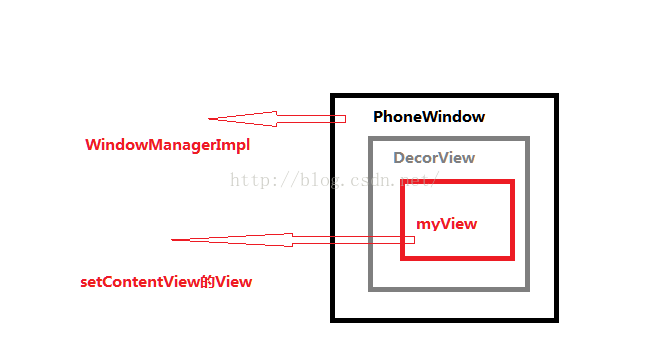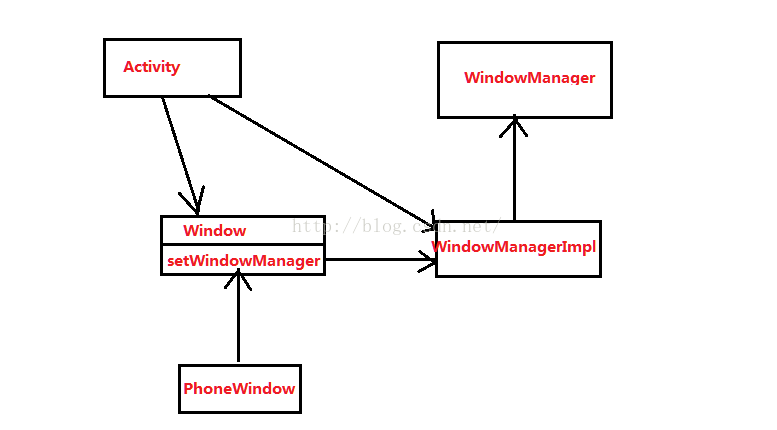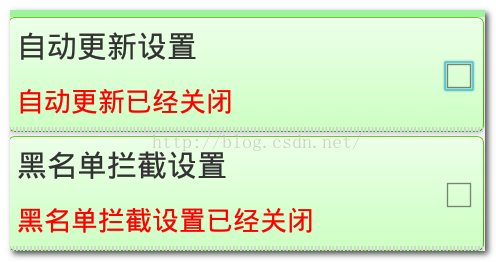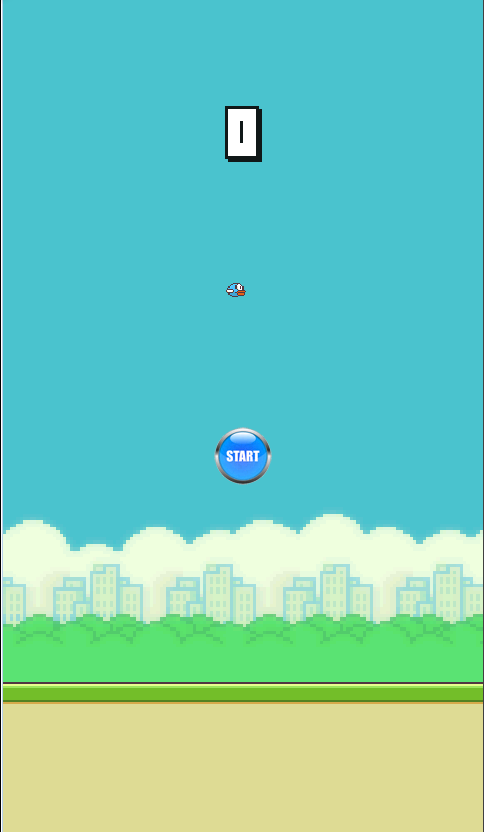編輯:關於Android編程
Tips:此源碼分析基於Android 4.2
先來看看一個Activity上的UI控件結構:

圖1-1 Activity中的UI組件結構
好了現在開始分析。。。。。。
一、Activity的創建
了解android的zygote分裂你會知道,每個APP都是zygote的子進程,而他的入口函數是ActivityThread類中的main函數。其中有一個handleLaucherActivity函數,這裡就是
創建Activity的地方。
private void handleLaunchActivity(ActivityClientRecord r, Intent customIntent) {
// If we are getting ready to gc after going to the background, well
// we are back active so skip it.
unscheduleGcIdler();
if (r.profileFd != null) {
mProfiler.setProfiler(r.profileFile, r.profileFd);
mProfiler.startProfiling();
mProfiler.autoStopProfiler = r.autoStopProfiler;
}
// Make sure we are running with the most recent config.
handleConfigurationChanged(null, null);
if (localLOGV) Slog.v(
TAG, "Handling launch of " + r);
//重點一
Activity a = performLaunchActivity(r, customIntent);
if (a != null) {
r.createdConfig = new Configuration(mConfiguration);
Bundle oldState = r.state;
// 重點二
handleResumeActivity(r.token, false, r.isForward,
!r.activity.mFinished && !r.startsNotResumed);
}
後面代碼省略 ......
}
這裡已經標出了兩個重點的函數
先來看看第一個performLauncherActivity
這個函數返回一個activity,可見activity確實在這裡創建了,先上代碼
private Activity performLaunchActivity(ActivityClientRecord r, Intent customIntent) {
......
Activity activity = null;
try {
java.lang.ClassLoader cl = r.packageInfo.getClassLoader();
//正真創建activity的地方
activity = mInstrumentation.newActivity(
cl, component.getClassName(), r.intent);
StrictMode.incrementExpectedActivityCount(activity.getClass());
r.intent.setExtrasClassLoader(cl);
if (r.state != null) {
r.state.setClassLoader(cl);
}
} catch (Exception e) {
if (!mInstrumentation.onException(activity, e)) {
throw new RuntimeException(
"Unable to instantiate activity " + component
+ ": " + e.toString(), e);
}
}
......
if (activity != null) {
Context appContext = createBaseContextForActivity(r, activity);
CharSequence title = r.activityInfo.loadLabel(appContext.getPackageManager());
Configuration config = new Configuration(mCompatConfiguration);
if (DEBUG_CONFIGURATION) Slog.v(TAG, "Launching activity "
+ r.activityInfo.name + " with config " + config);
//又是一個重點,暫且先不分析,,,
activity.attach(appContext, this, getInstrumentation(), r.token,
r.ident, app, r.intent, r.activityInfo, title, r.parent,
r.embeddedID, r.lastNonConfigurationInstances, config);
if (customIntent != null) {
activity.mIntent = customIntent;
}
r.lastNonConfigurationInstances = null;
activity.mStartedActivity = false;
int theme = r.activityInfo.getThemeResource();
if (theme != 0) {
activity.setTheme(theme);
}
activity.mCalled = false;
//這裡回調了Activity的OnCreate
mInstrumentation.callActivityOnCreate(activity, r.state);
if (!activity.mCalled) {
throw new SuperNotCalledException(
"Activity " + r.intent.getComponent().toShortString() +
" did not call through to super.onCreate()");
}
r.activity = activity;
r.stopped = true;
if (!r.activity.mFinished) {
activity.performStart();
r.stopped = false;
}
if (!r.activity.mFinished) {
if (r.state != null) {
mInstrumentation.callActivityOnRestoreInstanceState(activity, r.state);
}
}
if (!r.activity.mFinished) {
activity.mCalled = false;
mInstrumentation.callActivityOnPostCreate(activity, r.state);
if (!activity.mCalled) {
throw new SuperNotCalledException(
"Activity " + r.intent.getComponent().toShortString() +
" did not call through to super.onPostCreate()");
}
}
}
......
return activity;
}
這裡貼上了關鍵的代碼,由此可見performLauncherActivity函數主要做了兩件重要的事情,創建了Activity以及回調了OnCreate。
這裡看出他是利用了Java的反射機制根據類名創建了一個Activity
接下來再來看下第二個函數handleResumeActivity,什麼都不說先看代碼:
final void handleResumeActivity(IBinder token, boolean clearHide, boolean isForward,
boolean reallyResume) {
......
if (r.window == null && !a.mFinished && willBeVisible) {
r.window = r.activity.getWindow();
View decor = r.window.getDecorView();
decor.setVisibility(View.INVISIBLE);
ViewManager wm = a.getWindowManager();
WindowManager.LayoutParams l = r.window.getAttributes();
a.mDecor = decor;
l.type = WindowManager.LayoutParams.TYPE_BASE_APPLICATION;
l.softInputMode |= forwardBit;
if (a.mVisibleFromClient) {
a.mWindowAdded = true;
//關鍵函數
wm.addView(decor, l);
}
// If the window has already been added, but during resume
// we started another activity, then don't yet make the
// window visible.
}
.......
}
到了這裡可以看到多了兩個比較重要的對象View, ViewManager, 隨後decor對象add到了ViewManager,那麼這兩個對象到底是什麼呢?
getDectorView進去一看原來是Window類的一個抽象方法,那麼到底是什麼實現了他?
這就要看剛剛哪個Activity的attach函數了
final void attach(Context context, ActivityThread aThread,
Instrumentation instr, IBinder token, int ident,
Application application, Intent intent, ActivityInfo info,
CharSequence title, Activity parent, String id,
NonConfigurationInstances lastNonConfigurationInstances,
Configuration config) {
attachBaseContext(context);
mFragments.attachActivity(this, mContainer, null);
//創建了一個mWindow,這是一個實現了Window抽象方法的對象
mWindow = PolicyManager.makeNewWindow(this);
mWindow.setCallback(this);
mWindow.getLayoutInflater().setPrivateFactory(this);
......
//創建了WindowManager
mWindow.setWindowManager(
(WindowManager)context.getSystemService(Context.WINDOW_SERVICE),
mToken, mComponent.flattenToString(),
(info.flags & ActivityInfo.FLAG_HARDWARE_ACCELERATED) != 0);
if (mParent != null) {
mWindow.setContainer(mParent.getWindow());
}
mWindowManager = mWindow.getWindowManager();
mCurrentConfig = config;
}
在handleResumeActivity中的r.window = r.activity.getWindow();我們可以看出這裡創建的mWindow給了r.window
public Window getWindow() {
return mWindow;
}
由此可見mWindow的getDecorView方法返回的便是我們要認識的哪個View,現在就來看看這個mWindow到底是何方聖神。
創建mWindow時有出現了個PolicyManager,現在先看看這個是什麼東西
public final class PolicyManager {
private static final String POLICY_IMPL_CLASS_NAME =
"com.android.internal.policy.impl.Policy";
private static final IPolicy sPolicy;
static {
// Pull in the actual implementation of the policy at run-time
try {
Class policyClass = Class.forName(POLICY_IMPL_CLASS_NAME);
sPolicy = (IPolicy)policyClass.newInstance();
} catch (ClassNotFoundException ex) {
throw new RuntimeException(
POLICY_IMPL_CLASS_NAME + " could not be loaded", ex);
} catch (InstantiationException ex) {
throw new RuntimeException(
POLICY_IMPL_CLASS_NAME + " could not be instantiated", ex);
} catch (IllegalAccessException ex) {
throw new RuntimeException(
POLICY_IMPL_CLASS_NAME + " could not be instantiated", ex);
}
}
// Cannot instantiate this class
private PolicyManager() {}
// The static methods to spawn new policy-specific objects
public static Window makeNewWindow(Context context) {
return sPolicy.makeNewWindow(context);
}
public static LayoutInflater makeNewLayoutInflater(Context context) {
return sPolicy.makeNewLayoutInflater(context);
}
public static WindowManagerPolicy makeNewWindowManager() {
return sPolicy.makeNewWindowManager();
}
public static FallbackEventHandler makeNewFallbackEventHandler(Context context) {
return sPolicy.makeNewFallbackEventHandler(context);
}
}
從這裡可以看出調用的PolicyManager.makeNewWindow(this)正真實現是在Policy中
public Window makeNewWindow(Context context) {
return new PhoneWindow(context);
}
至此我們才發現所謂的mWindow其實是一個PhoneWindow對象
現在我們在了看看正真實現getDecorView的PhoneWindow中獲得的View到底是什麼?
@Override
public final View getDecorView() {
if (mDecor == null) {
installDecor();
}
return mDecor;
}
private void installDecor() {
if (mDecor == null) {
mDecor = generateDecor();
mDecor.setDescendantFocusability(ViewGroup.FOCUS_AFTER_DESCENDANTS);
mDecor.setIsRootNamespace(true);
if (!mInvalidatePanelMenuPosted && mInvalidatePanelMenuFeatures != 0) {
mDecor.postOnAnimation(mInvalidatePanelMenuRunnable);
}
}
if (mContentParent == null) {
mContentParent = generateLayout(mDecor);
// Set up decor part of UI to ignore fitsSystemWindows if appropriate.
mDecor.makeOptionalFitsSystemWindows();
mTitleView = (TextView)findViewById(com.android.internal.R.id.title);
......
}
......
}
到了這一步我們才發現原來哪個View是一個DecorView,
private final class DecorView extends FrameLayout implements RootViewSurfaceTaker
好了現在解決了我們第一個問題,View到底是什麼?現在我們再來分析下ViewManager究竟是什麼?
ViewManager wm = a.getWindowManager();
public WindowManager getWindowManager() {
return mWindowManager;
}
但是WindowManager只是一個公共的接口,我們還是得進入到attach中的mWindow.setWindowManager()中看看到底發生了什麼?
public interface WindowManager extends ViewManager
public void setWindowManager(WindowManager wm, IBinder appToken, String appName,
boolean hardwareAccelerated) {
mAppToken = appToken;
mAppName = appName;
mHardwareAccelerated = hardwareAccelerated
|| SystemProperties.getBoolean(PROPERTY_HARDWARE_UI, false);
if (wm == null) {
wm = (WindowManager)mContext.getSystemService(Context.WINDOW_SERVICE);
}
mWindowManager = ((WindowManagerImpl)wm).createLocalWindowManager(this);
}
public WindowManagerImpl createLocalWindowManager(Window parentWindow) {
return new WindowManagerImpl(mDisplay, parentWindow);
}
好了處理了這門多復雜的關系,我們先來總結下:
1、我們是分析到了handleResumeActivity這個函數,想弄清楚View跟ViewManager分別是什麼?
2、之後我們返回去查看activity的attache函數,發現其中創建的mWindow跟mWindowManager其實是PhoneWindow與WindowManagerImpl.
3、我們再回到View與ViewManager的創建過程,發下其實View是在PhoneWindow中創建的DecorView而ViewManager正是mWindowManager(即WindowManagerImpl),
在attach中調用Window的setWindowManager時將創建的WindowManagerImpl保存了起來。
經過這般分析再來看這張圖:

好了,接下來我們繼續來分析handleResumeActivity中另一個很關鍵的函數wm.addView(decor, l);
addView的正真實現實在frameworks\base\core\java\android\view\WindowManagerGlobal.java
public void addView(View view, ViewGroup.LayoutParams params,
Display display, Window parentWindow) {
if (view == null) {
throw new IllegalArgumentException("view must not be null");
}
if (display == null) {
throw new IllegalArgumentException("display must not be null");
}
if (!(params instanceof WindowManager.LayoutParams)) {
throw new IllegalArgumentException("Params must be WindowManager.LayoutParams");
}
final WindowManager.LayoutParams wparams = (WindowManager.LayoutParams)params;
if (parentWindow != null) {
parentWindow.adjustLayoutParamsForSubWindow(wparams);
}
ViewRootImpl root;
View panelParentView = null;
synchronized (mLock) {
// Start watching for system property changes.
if (mSystemPropertyUpdater == null) {
mSystemPropertyUpdater = new Runnable() {
@Override public void run() {
synchronized (mLock) {
for (ViewRootImpl viewRoot : mRoots) {
viewRoot.loadSystemProperties();
}
}
}
};
SystemProperties.addChangeCallback(mSystemPropertyUpdater);
}
int index = findViewLocked(view, false);
if (index >= 0) {
throw new IllegalStateException("View " + view
+ " has already been added to the window manager.");
}
// If this is a panel window, then find the window it is being
// attached to for future reference.
if (wparams.type >= WindowManager.LayoutParams.FIRST_SUB_WINDOW &&
wparams.type <= WindowManager.LayoutParams.LAST_SUB_WINDOW) {
final int count = mViews != null ? mViews.length : 0;
for (int i=0; i= 0) {
removeViewLocked(index, true);
}
}
throw e;
}
}
這裡有出現了一個新的對象ViewRootImpl以及調用了它的一個重要方法setView,現在我們就來分析下
public final class ViewRootImpl implements ViewParent,
View.AttachInfo.Callbacks, HardwareRenderer.HardwareDrawCallbacks
有一個mSurface,他是Surface類型,而前面提到的UI都是在這上面繪畫出來的,可以想象成一個畫布
還有一個W類型的內部類,這個類將參與Binder通信
static class W extends IWindow.Stub
我們接著看下ViewRootImpl的構造函數:
public ViewRootImpl(Context context, Display display) {
super();
if (MEASURE_LATENCY) {
if (lt == null) {
lt = new LatencyTimer(100, 1000);
}
}
// Initialize the statics when this class is first instantiated. This is
// done here instead of in the static block because Zygote does not
// allow the spawning of threads.
mWindowSession = WindowManagerGlobal.getWindowSession(context.getMainLooper());
mDisplay = display;
CompatibilityInfoHolder cih = display.getCompatibilityInfo();
mCompatibilityInfo = cih != null ? cih : new CompatibilityInfoHolder();
mThread = Thread.currentThread();
mLocation = new WindowLeaked(null);
mLocation.fillInStackTrace();
mWidth = -1;
mHeight = -1;
mDirty = new Rect();
mTempRect = new Rect();
mVisRect = new Rect();
mWinFrame = new Rect();
mWindow = new W(this);
......
}
public static IWindowSession getWindowSession(Looper mainLooper) {
synchronized (WindowManagerGlobal.class) {
if (sWindowSession == null) {
try {
InputMethodManager imm = InputMethodManager.getInstance(mainLooper);
IWindowManager windowManager = getWindowManagerService();
sWindowSession = windowManager.openSession(
imm.getClient(), imm.getInputContext());
float animatorScale = windowManager.getAnimationScale(2);
ValueAnimator.setDurationScale(animatorScale);
} catch (RemoteException e) {
Log.e(TAG, "Failed to open window session", e);
}
}
return sWindowSession;
}
}
現在我們來看下setView中的調用的一個重要方法
public void setView(View view, WindowManager.LayoutParams attrs, View panelParentView) {
......
// Schedule the first layout -before- adding to the window
// manager, to make sure we do the relayout before receiving
// any other events from the system.
//重點關注
requestLayout();
if ((mWindowAttributes.inputFeatures
& WindowManager.LayoutParams.INPUT_FEATURE_NO_INPUT_CHANNEL) == 0) {
mInputChannel = new InputChannel();
}
try {
mOrigWindowType = mWindowAttributes.type;
mAttachInfo.mRecomputeGlobalAttributes = true;
collectViewAttributes();
// 這裡調用了IWindowSession的addToDisplay並且把W類型的mWindow傳過去
res = mWindowSession.addToDisplay(mWindow, mSeq, mWindowAttributes,
getHostVisibility(), mDisplay.getDisplayId(),
mAttachInfo.mContentInsets, mInputChannel);
} catch (RemoteException e) {
mAdded = false;
mView = null;
mAttachInfo.mRootView = null;
mInputChannel = null;
mFallbackEventHandler.setView(null);
unscheduleTraversals();
setAccessibilityFocus(null, null);
throw new RuntimeException("Adding window failed", e);
} finally {
if (restore) {
attrs.restore();
}
}
......
}
現在我們來看看requestLayout函數,這裡才是Activity的UI繪制,進去看看發現其實是一個異步任務中執行了那些繪制任務
final class TraversalRunnable implements Runnable {
@Override
public void run() {
doTraversal();
}
}
void doTraversal() {
if (mTraversalScheduled) {
mTraversalScheduled = false;
mHandler.getLooper().removeSyncBarrier(mTraversalBarrier);
if (mProfile) {
Debug.startMethodTracing("ViewAncestor");
}
Trace.traceBegin(Trace.TRACE_TAG_VIEW, "performTraversals");
try {
performTraversals();
} finally {
Trace.traceEnd(Trace.TRACE_TAG_VIEW);
}
if (mProfile) {
Debug.stopMethodTracing();
mProfile = false;
}
}
}
//這個函數還是比較麻煩的,這裡就給出關鍵點
private void performTraversals() {
......
relayoutResult = relayoutWindow(params, viewVisibility, insetsPending);
......
//一些繪制相關工作
mView.draw(layerCanvas);
......
}
private int relayoutWindow(WindowManager.LayoutParams params, int viewVisibility,
boolean insetsPending) throws RemoteException {
float appScale = mAttachInfo.mApplicationScale;
boolean restore = false;
if (params != null && mTranslator != null) {
restore = true;
params.backup();
mTranslator.translateWindowLayout(params);
}
if (params != null) {
if (DBG) Log.d(TAG, "WindowLayout in layoutWindow:" + params);
}
mPendingConfiguration.seq = 0;
//Log.d(TAG, ">>>>>> CALLING relayout");
if (params != null && mOrigWindowType != params.type) {
// For compatibility with old apps, don't crash here.
if (mTargetSdkVersion < android.os.Build.VERSION_CODES.ICE_CREAM_SANDWICH) {
Slog.w(TAG, "Window type can not be changed after "
+ "the window is added; ignoring change of " + mView);
params.type = mOrigWindowType;
}
}
int relayoutResult = mWindowSession.relayout(
mWindow, mSeq, params,
(int) (mView.getMeasuredWidth() * appScale + 0.5f),
(int) (mView.getMeasuredHeight() * appScale + 0.5f),
viewVisibility, insetsPending ? WindowManagerGlobal.RELAYOUT_INSETS_PENDING : 0,
mWinFrame, mPendingContentInsets, mPendingVisibleInsets,
mPendingConfiguration, mSurface);
//Log.d(TAG, "<<<<<< BACK FROM relayout");
if (restore) {
params.restore();
}
if (mTranslator != null) {
mTranslator.translateRectInScreenToAppWinFrame(mWinFrame);
mTranslator.translateRectInScreenToAppWindow(mPendingContentInsets);
mTranslator.translateRectInScreenToAppWindow(mPendingVisibleInsets);
}
return relayoutResult;
}
補充:
既然是Activity的顯示,那麼必然是少不了顯示我們自己設置的UI,一般我們設置的UI都是在OnCreate中的setContentView中設置,現在我們就來看看這個函數到底做了那些事。
Activity中的SetContentView();
public void setContentView(View view) {
getWindow().setContentView(view);
initActionBar();
}
還記得上面所說的Activity顯示中有一個Window吧,那個getWindow就是PhoneWindow,那麼我們就來看看PhoneWindow中的SetContentView:
@Override
public void setContentView(View view) {
setContentView(view, new ViewGroup.LayoutParams(MATCH_PARENT, MATCH_PARENT));
}
@Override
public void setContentView(View view, ViewGroup.LayoutParams params) {
if (mContentParent == null) {
installDecor();
} else {
mContentParent.removeAllViews();
}
mContentParent.addView(view, params);
final Callback cb = getCallback();
if (cb != null && !isDestroyed()) {
cb.onContentChanged();
}
}
接下來再來看看installDector:
private void installDecor() {
if (mDecor == null) {
mDecor = generateDecor();
mDecor.setDescendantFocusability(ViewGroup.FOCUS_AFTER_DESCENDANTS);
mDecor.setIsRootNamespace(true);
if (!mInvalidatePanelMenuPosted && mInvalidatePanelMenuFeatures != 0) {
mDecor.postOnAnimation(mInvalidatePanelMenuRunnable);
}
}
if (mContentParent == null) {
mContentParent = generateLayout(mDecor);
// Set up decor part of UI to ignore fitsSystemWindows if appropriate.
mDecor.makeOptionalFitsSystemWindows();
mTitleView = (TextView)findViewById(com.android.internal.R.id.title);
if (mTitleView != null) {
mTitleView.setLayoutDirection(mDecor.getLayoutDirection());
if ((getLocalFeatures() & (1 << FEATURE_NO_TITLE)) != 0) {
View titleContainer = findViewById(com.android.internal.R.id.title_container);
if (titleContainer != null) {
titleContainer.setVisibility(View.GONE);
} else {
mTitleView.setVisibility(View.GONE);
}
if (mContentParent instanceof FrameLayout) {
((FrameLayout)mContentParent).setForeground(null);
}
} else {
mTitleView.setText(mTitle);
}
} else {
mActionBar = (ActionBarView) findViewById(com.android.internal.R.id.action_bar);
if (mActionBar != null) {
mActionBar.setWindowCallback(getCallback());
if (mActionBar.getTitle() == null) {
mActionBar.setWindowTitle(mTitle);
}
final int localFeatures = getLocalFeatures();
if ((localFeatures & (1 << FEATURE_PROGRESS)) != 0) {
mActionBar.initProgress();
}
if ((localFeatures & (1 << FEATURE_INDETERMINATE_PROGRESS)) != 0) {
mActionBar.initIndeterminateProgress();
}
boolean splitActionBar = false;
final boolean splitWhenNarrow =
(mUiOptions & ActivityInfo.UIOPTION_SPLIT_ACTION_BAR_WHEN_NARROW) != 0;
if (splitWhenNarrow) {
splitActionBar = getContext().getResources().getBoolean(
com.android.internal.R.bool.split_action_bar_is_narrow);
} else {
splitActionBar = getWindowStyle().getBoolean(
com.android.internal.R.styleable.Window_windowSplitActionBar, false);
}
final ActionBarContainer splitView = (ActionBarContainer) findViewById(
com.android.internal.R.id.split_action_bar);
if (splitView != null) {
mActionBar.setSplitView(splitView);
mActionBar.setSplitActionBar(splitActionBar);
mActionBar.setSplitWhenNarrow(splitWhenNarrow);
final ActionBarContextView cab = (ActionBarContextView) findViewById(
com.android.internal.R.id.action_context_bar);
cab.setSplitView(splitView);
cab.setSplitActionBar(splitActionBar);
cab.setSplitWhenNarrow(splitWhenNarrow);
} else if (splitActionBar) {
Log.e(TAG, "Requested split action bar with " +
"incompatible window decor! Ignoring request.");
}
// Post the panel invalidate for later; avoid application onCreateOptionsMenu
// being called in the middle of onCreate or similar.
mDecor.post(new Runnable() {
public void run() {
// Invalidate if the panel menu hasn't been created before this.
PanelFeatureState st = getPanelState(FEATURE_OPTIONS_PANEL, false);
if (!isDestroyed() && (st == null || st.menu == null)) {
invalidatePanelMenu(FEATURE_ACTION_BAR);
}
}
});
}
}
}
}
再來看看mContentParent:
protected ViewGroup generateLayout(DecorView decor) {
......
mDecor.startChanging();
//layoutResource是一個資源ID
View in = mLayoutInflater.inflate(layoutResource, null);
decor.addView(in, new ViewGroup.LayoutParams(MATCH_PARENT, MATCH_PARENT));
//ID_ANDROID_CONTENT是com.android.internal.R.id.content
ViewGroup contentParent = (ViewGroup)findViewById(ID_ANDROID_CONTENT);
if (contentParent == null) {
throw new RuntimeException("Window couldn't find content container view");
}
if ((features & (1 << FEATURE_INDETERMINATE_PROGRESS)) != 0) {
ProgressBar progress = getCircularProgressBar(false);
if (progress != null) {
progress.setIndeterminate(true);
}
}
......
return contentPartent;
}
這裡的contentPartent是由findViewById獲得,實際是mDectorView的一部分,為什麼這麼說看看下面的代碼就知道了:
public View findViewById(int id) {
return getDecorView().findViewById(id);
}
 android之播放器
android之播放器
本部分代碼在《Android應用開發揭秘》中提到,但是在eclipse環境下調試時出現異常,幾番糾結,代碼終於可以播放器音樂、並成功移植到手機上...... p
 Android初級教程初談自定義view自定義屬性
Android初級教程初談自定義view自定義屬性
有些時候,自己要在布局文件中重復書寫大量的代碼來定義一個布局。這是最基本的使用,當然要掌握;但是有些場景都去對應的布局裡面寫對應的屬性,就顯得很無力。會發現,系統自帶的控
 Android中事件的分發機制
Android中事件的分發機制
Android事件構成在Android中,事件主要包括點按、長按、拖拽、滑動等,點按又包括單擊和雙擊,另外還包括單指操作和多指操作。所有這些都構成了Andro
 Android 模仿flabby bird游戲開發
Android 模仿flabby bird游戲開發
一、示意圖:1)開始畫面:2)游戲中畫面:3)結束畫面:二、分析:1、游戲中的每個元素都可封裝成對象,1)開始按鈕與結束按鈕可封裝成GameButton對象:屬性有:有坐